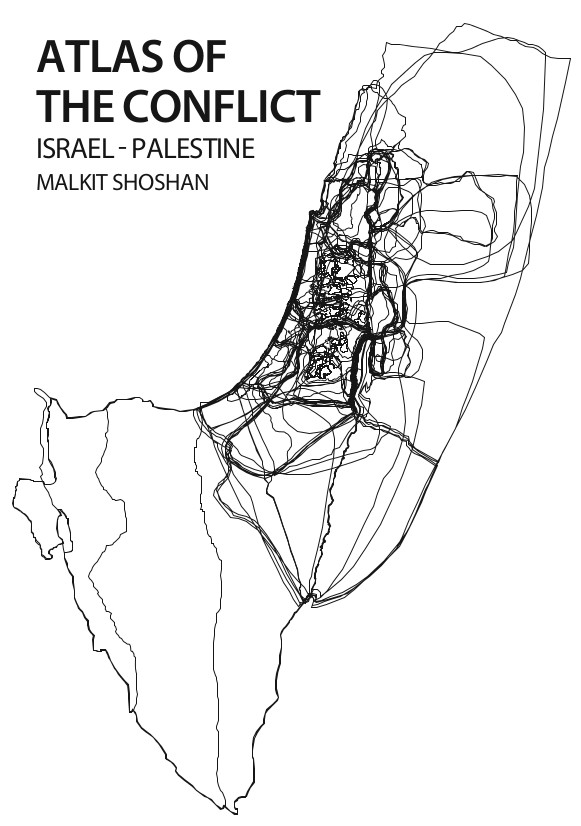Raja Shehadeh: Strangers in the House: Coming of Age in Occupied Palestine (2002/2009)
Filed under book | Tags: · biography, human rights, israel, memoir, middle east, palestine, politics

“Raja Shehadeh was born into a successful Palestinian family with a beautiful house overlooking the Mediterranean. When the state of Israel was formed in 1948 the family were driven out to the provincial town of Ramallah. There Shehadeh grew up in the shadow of his father, a leading civil rights lawyer. He vowed not to become involved in politics or law but inevitably did so and became an important activist himself.In 1985 his father was stabbed to death. The Israeli police failed to investigate the murder properly and Shehadeh, by then a lawyer, set about solving the crime that destroyed his family. InStrangers in the House, Shehadeh recounts his troubled and complex relationship with his father and his experience of exile – of being a stranger in his own land. It is a remarkable memoir that combines the personal and political to devastating effect.”
Originally published in 2002
English edition
Publisher Profile Books, London, 2009
ISBN 1846682509, 9781846682506
238 pages
PDF (updated on 2020-9-27)
Comment (0)Malkit Shoshan: Atlas Of The Conflict, Israel-Palestine (2010/2012)
Filed under book | Tags: · architecture, history, israel, palestine, politics, urban planning, war

The Atlas of the Conflict maps the processes and mechanisms behind the shaping of Israel-Palestine over the past 100 years. Over 500 maps and diagrams provide a detailed territorial analysis of the Israeli-Palestinian conflict, explored through themes such as borders, settlements, land ownership, archaeological and cultural heritage sites, control of natural resources, landscaping, wars and treaties. A lexicon, drawing on many different information sources, provides a commentary on the conflict from various perspectives. As a whole, the book offers insights not only into the specific situation of Israel-Palestine, but also into the phenomenon of spatial planning used as a political instrument.
In the early 20th century, waves of Jewish immigrants swept across the country of Palestine, seeking to impress onto it a new nation. It took over 50 years of local and international transitions to redeem the land; dressing it with uniformity, a new identity, a new landscape, a new people and a new culture while ignoring an existing landscape, an existing people, an existing culture and an existing nation.
In 1948 one nation celebrated its formal recognition by the international community and the other grieved amidst its ruins. This atlas of the Israeli-Palestinian conflict maps the processes and mechanisms behind the modification of the country during the past 100 years, both on a policy level and in its implementations on the ground. With over 500 maps and diagrams this is an indispensable reference book on the conflict. There are lessons to be learnt from the atlas on a broader front, from the withdrawal of the colonial powers in the early 20th century to the forced division of the Middle East and the ongoing wars and disputes over territory and resources.
Maps, plans and diagrams give a neutral, apolitical overview of the protracted conflict in Israel and Palestine.
The book won the Leipzig Art Book Fair’s Golden Letter award for “most beautiful book in the world.” Malkit Shoshan is an Amsterdam-based Israeli architect and founder/director of FAST (Foundation for Achieving Seamless Territory).
Originally published by 010 Publishers, Rotterdam, 2010
Publisher Publication Studio, Portland, OR, 2012
Jank Edition series
ISBN 9789064506888
478 pages
review (Yousef Munayyer, Palestine Center)
review (Esther Zandberg, Haaretz)
review (Régine Debatty, we-make-money-not-art.com)
more reviews
PDF (low resolution, 82 MB)
PDF (high resolution, 389 MB)
Stephen Graham: Cities Under Siege: The New Military Urbanism (2010)
Filed under book | Tags: · city, iraq, israel, military, neoliberalism, security, surveillance, technology, terrorism, urbanism, war

A powerful exposé of how political violence operates through the spaces of urban life.
Cities are the new battleground of our increasingly urban world. From the slums of the global South to the wealthy financial centers of the West, Cities Under Siege traces the spread of political violence through the sites, spaces, infrastructure and symbols of the world’s rapidly expanding metropolitan areas.
Drawing on a wealth of original research, Stephen Graham shows how Western militaries and security forces now perceive all urban terrain as a conflict zone inhabited by lurking shadow enemies. Urban inhabitants have become targets that need to be continually tracked, scanned and controlled. Graham examines the transformation of Western armies into high-tech urban counter-insurgency forces. He looks at the militarization and surveillance of international borders, the use of ‘security’ concerns to suppress democratic dissent, and the enacting of legislation to suspend civilian law. In doing so, he reveals how the New Military Urbanism permeates the entire fabric of urban life, from subway and transport networks hardwired with high-tech ‘command and control’ systems to the insidious militarization of a popular culture corrupted by the all-pervasive discourse of ‘terrorism.’
Publisher Verso Books, London, 2010
ISBN 1844678369, 9781844678365
432 pages
review (Nicholas Lezard, The Guardian)
review (Jeff Heydon, review31)
review (George Steinmetz)
review (Alice O’Connor)
review (Jennifer Light)

